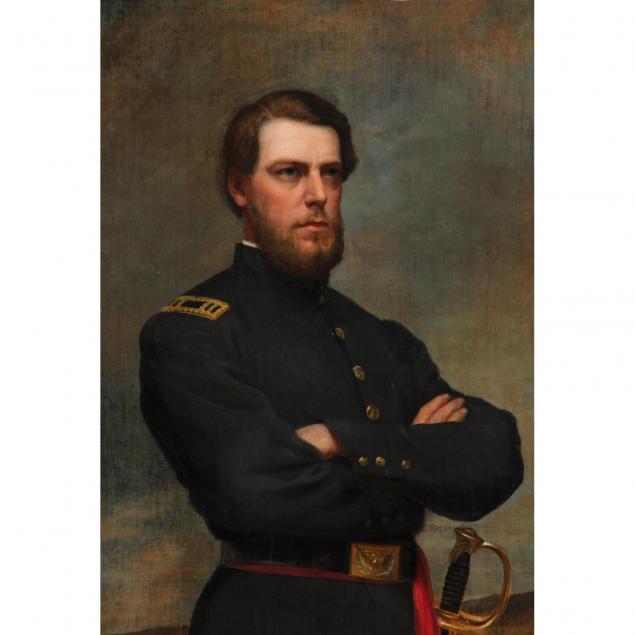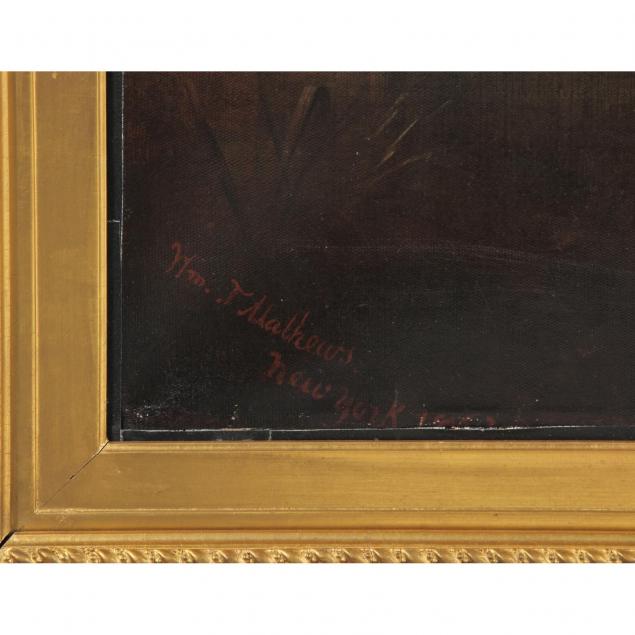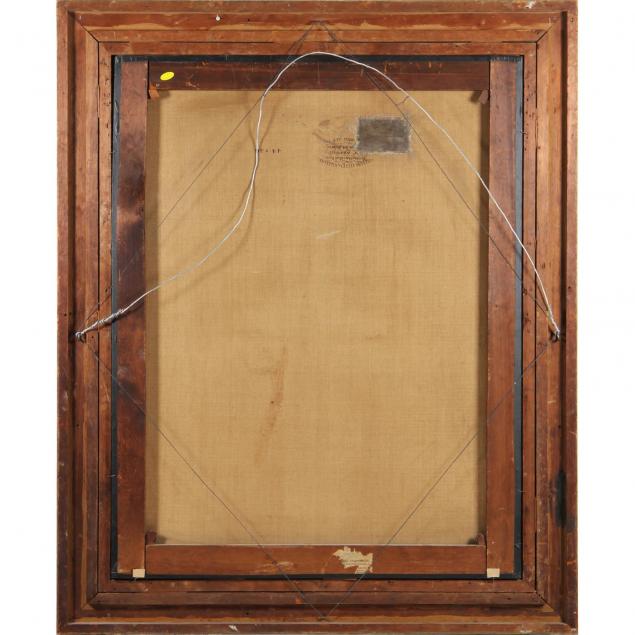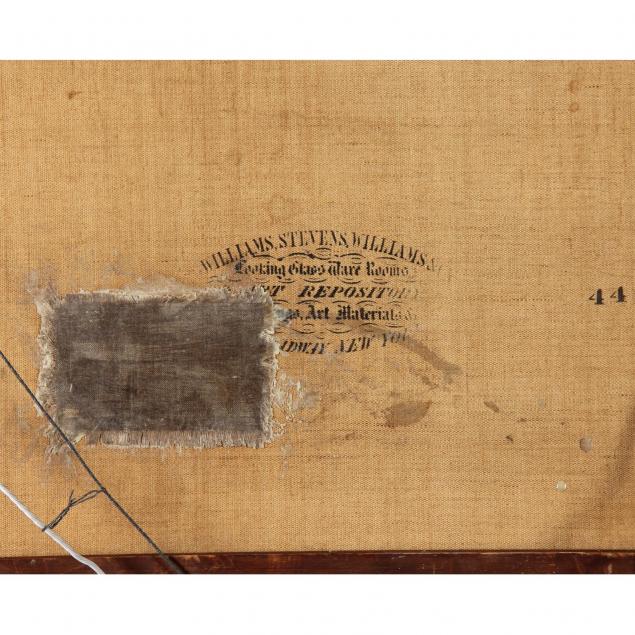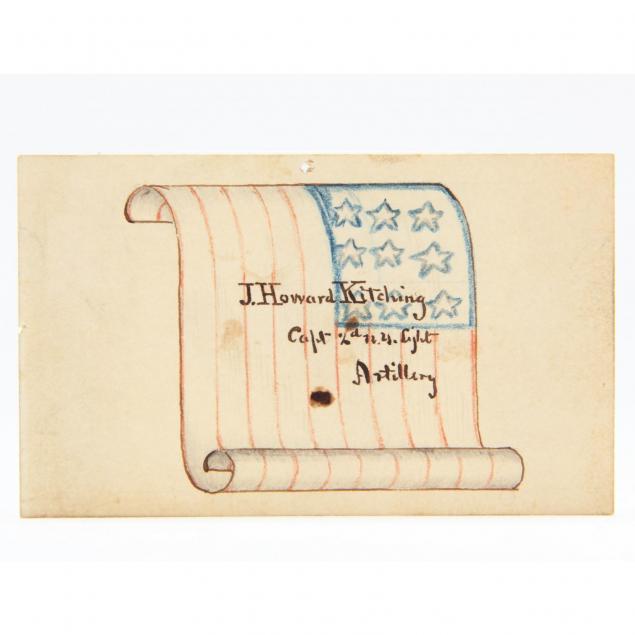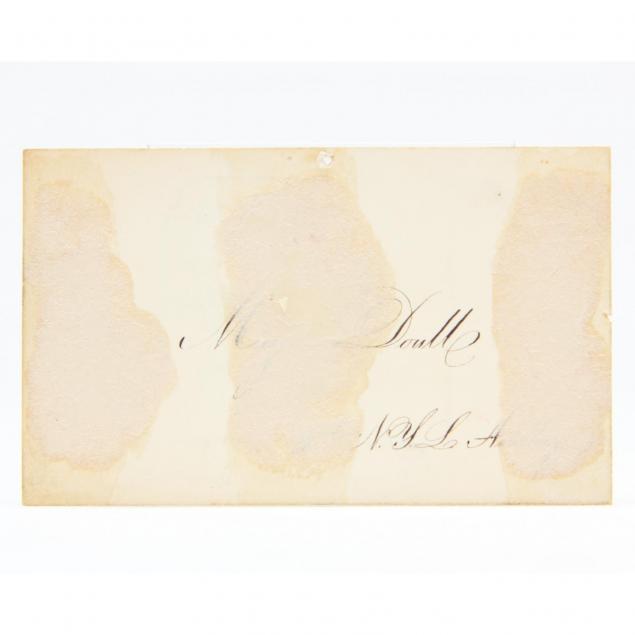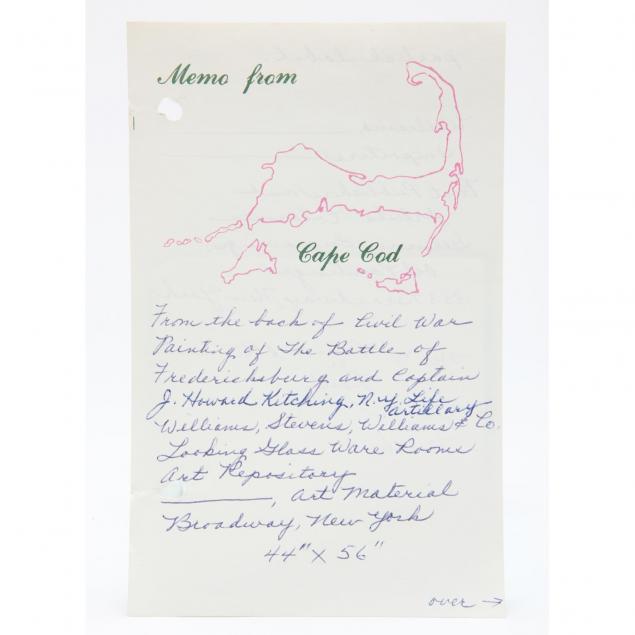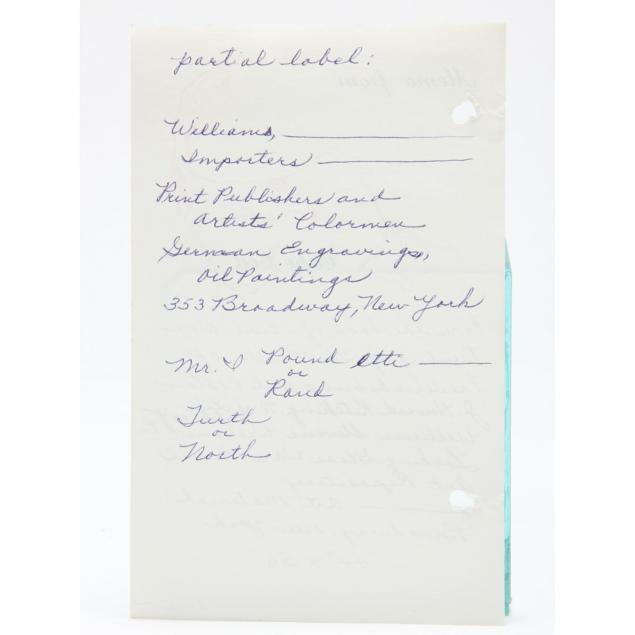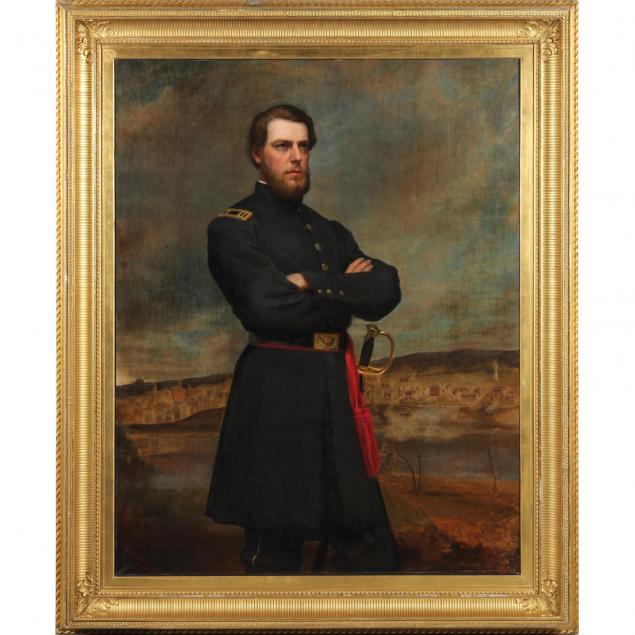
Lot 771
William T. Matthews (D.C./NY, 1821-1905), Likely Early Portrait of a Future Union Brigadier
Explore more items like this one.
Visit our Fine Art Department Fine Art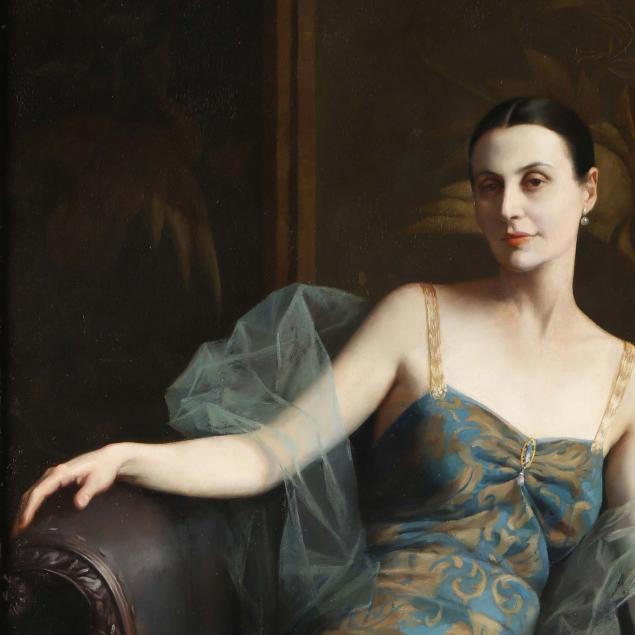
Lot Details & Additional Photographs
The subject, said to be J. Howard Kitching, stands above the Rappahannock River opposite Confederate-held Fredericksburg, Virginia. He wears a dark blue frock coat fitted with a Union captain's shoulder straps and the red sash of an artillery officer. In the distance, to his right, federal engineers build a pontoon bridge while enduring heavy fire from the city's defenders. In the river, to the captain's left, is a row of masonry pylons-- the only remains of the destroyed Richmond, Fredericksburg and Potomac Railroad bridge.
A period calling card imprinted "Maj. Doull / 2nd N.Y.L. Artillery" came with the painting and is included here. Residual tape over the name suggests the card was pasted down face-first; the back of the card is neatly inscribed "J. Howard Kitching / Capt. 2d N.Y. Light /Artillery" over a rather accomplished color drawing of a scrolled American flag. Family tradition has it that the subject of the painting is, in fact, John Howard Kitching since the card was affixed to the back of the frame when the painting was purchased.
An excerpt from an unknown wartime account claims that J. Howard Kitching enlisted as a private in the "Lincoln Cavalry" when the Civil War began. In August 1861 he transferred to the 2nd New York Heavy Artillery as a commissioned captain. The following summer Kitching helped organize the 6th New York Heavy Artillery and became that organization's first lieutenant colonel. By April 1863 he was the regiment's colonel and actively commanding a brigade of artillerists-turned-infantry. After serving at Cold Harbor and Petersburg, Kitching was transferred to the Army of the Shenandoah. The move proved fatal. On October 19, 1864 Kitching was wounded in the foot at Cedar Creek, some miles below Winchester, Virginia. He left the Army to recover, however the injury became increasingly problematic. The youthful colonel lingered at his home in Dobbs Ferry, New York, expiring on January 10, 1865. For exemplary service, he was posthumously made a brevet brigadier general retroactive to August 1, 1864.
SS 55.5 x 43.5 in.; DOA 69.5 x 55.5 in.
Estate of Frank H. Coleman of Wellesley, MA and Pinehurst, NC
English-born William T. Matthews (1821-1905) emigrated with his parents to the United States in 1833. As a young man he apprenticed with Charles Soule in Cincinnati before moving to New York in 1848. Matthews, often referred to as the "Painter of Presidents," was indeed fortunate enough to secure commissions for portraits of Abraham Lincoln, Rutherford B. Hayes, James Garfield and William McKinley. He also painted prominent Americans who did not happen to live in the White House and was, by any standard, an accomplished landscape artist as well.
Small patch on the verso with associated repaired tear (approximately 2 in.) to officer's hairline; dark tape along the painting's side is folded over the edge and is present on 1/8 in. of the visible canvas to cover the last digit of the date placed by the signature; over-cleaned.
$3,000 - 6,000
